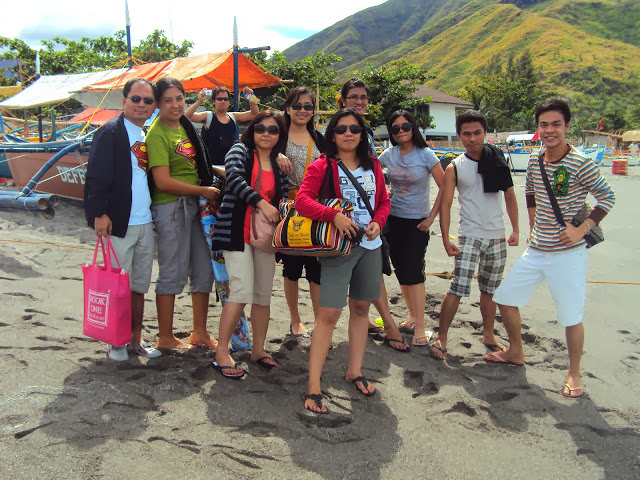
Matukad Island is the closest island to Gota and is usually the first stop during the island hopping activity. Matukad is said to be the most scenic and has the best white sand beach among the islands in the Caramaon Peninsula. Huge and small rock formations dot the surrounding waters offering a spectacular scenery. The white-powdery-sand beach is almost perfect for swimming -it's just that because the island is pristine, seaweeds and rough stones are scattered on some parts of the shore. You may still enjoy the crystal clear waters but you have to take extra careful. You may wear waterproof rubber shoes or slippers to protect your feet and sunblock before taking a deep to the inviting beach to avoid skin blackening and other problems.

With its enchanting beauty and remoteness, it is no wonder that productions of different Survivor Franchises keep on coming back to Caramoan to film their own version of the hit TV series, The Survivor. Oh, I almost forget, your stop to Matukad depends on the schedule of taping of The Survivor because it is one of the venues. If there is an ongoing taping, the island is off to the public

 |
| The fine, white, powdery sand of Matukad Island. |

 | |
| Matukad is a small island. If you're looking for a place of seclusion, it can be your perfect getaway. |
.jpg)
Aside from great swimming experience and fabulous views for photoshoots, Matukad also give guests a one-of-its-kind adventure. Explore the lush tropical forest by climbing the rock formations that conceals the small lagoon. Elijerwin, our tour guide asked us if we want to try rock climbing and see the lagoon that is being hid by the big lump of rock formations. Without hesitation, we all agreed to take the challenge. We want to try something that we may not have done before.


Rock climbing is no joke. Aside from the pointed rocks we need to pass on, there was no rope that would pull us up if ever we lose control or stepped on broken edges. But we faced our fears with height and we made it. We were very happy when we reached the top and rewarded by the fascinating views of the whole stretch of the island as well as the other islands around us.
 |
| A rewarding site after the climb |


Down is the lagoon which according to the story, once there were 2 big "bangus" inhabiting the lagoon and people believes they were the "guardian" of the island. Elijerwin added, "the other bangus had been captured and the one who caught it died".
 |
| The Hidden Lagoon |
Unfortunately, we did not see the bangus. So we just took different poses again for photographs and enjoyed the view from the top instead. We also gave our shout outs: "I LOVE CAMSUR!", then we took our way down.

Elijerwin assisted our friend Karen on her way down the rocks. To their surprise, the big bangus appeared before their eyes and Elijerwin was able to take a photo of its appearance.
.jpg) |
| Rock climbing is really a tiring activity. So when we got down, we laid on the sand and rest for a while. |
OTHER PICTURES FOR SOUVENIR:
.jpg)



 |
| THE CAST (L-R): Sally Jumawan, Karen Reyes, Joel (ME), Shayne Rodriguez, Lady Lutrania, Jerry Obra & Jared Jumawan |
Date of Experience: September 11, 2011
With: Karen Reyes, Lady Lutrania, Jerry Obra, Shayne Rodriguez, Sally & Jared Jumawan





















